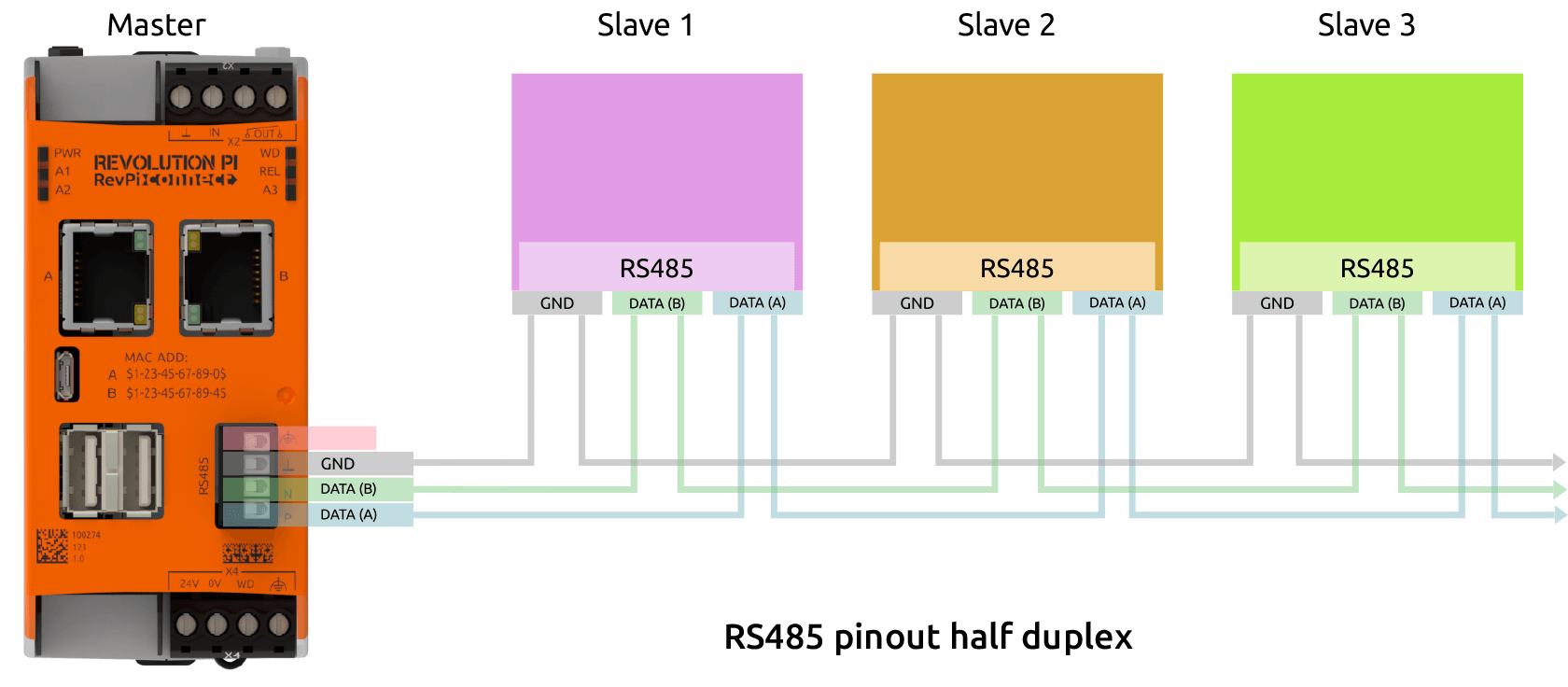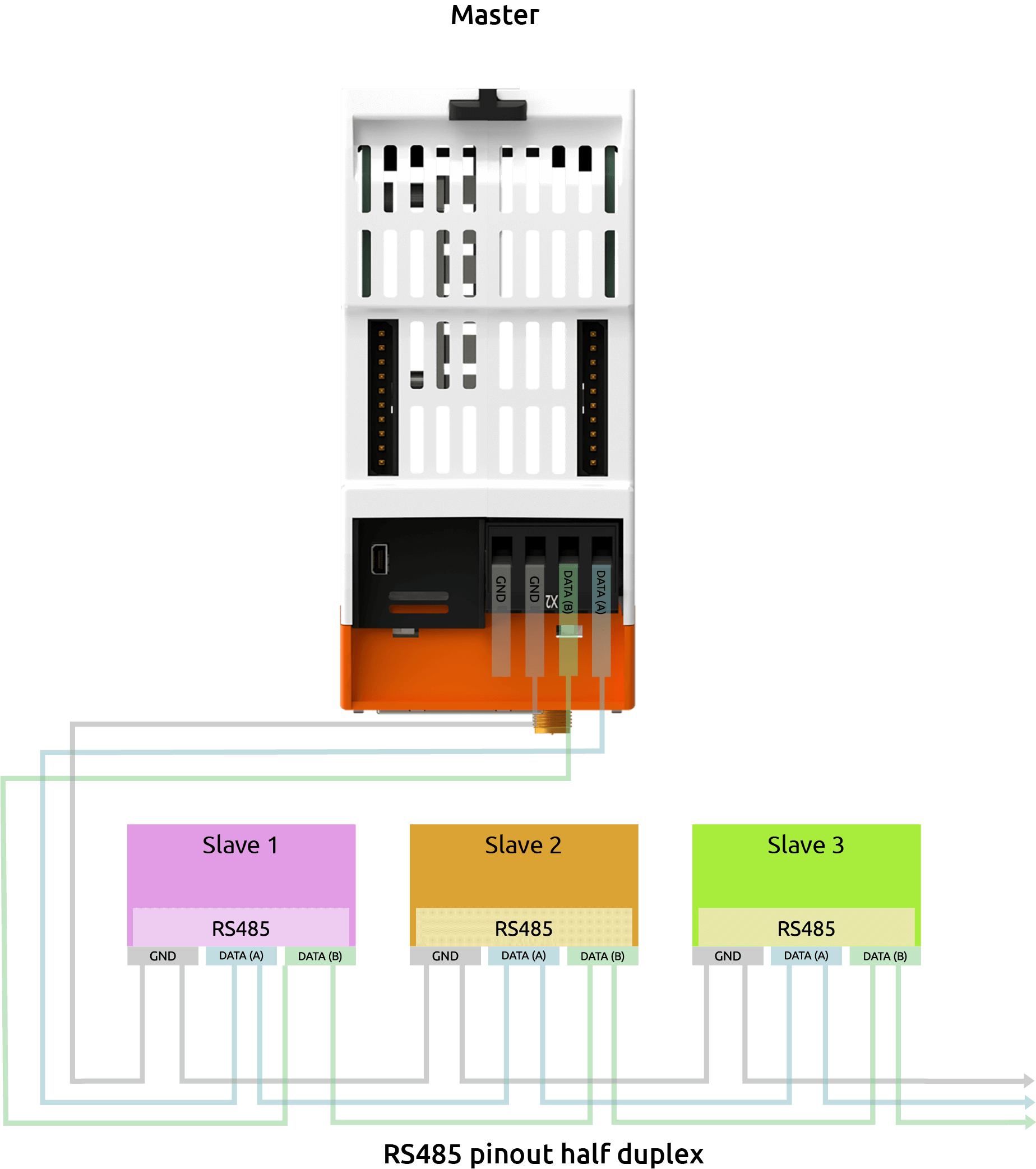The RS485 connection offers the advantage of integrating serial devices (e.g. a sensor) cost-effectively into your system.
The socket has common A/B line terminals (better marked than D+ and D-) and reference terminals (internal GND and functional earth via 1 MOhm RC network).
RevPi Connect

RevPi Connect 4

How you use this connection depends on your project environment. The network you are working with or the EMC load are individual factors that influence how you occupy this connector.
Therefore, we cannot show you in this chapter an optimal solution that works 100% in your environment, but we have compiled for you the problems that can occur and tips on how you can possibly solve them.
RS485 is a fully differential line and does not normally require a third GND line. However, due to the limits of the input receivers (“maximum common mode voltage”), signal quality problems may occur if no potential reference is used between transmitter and receiver. However, connecting the internal GND to a line that is loaded by EMC can cause EMC problems within the RevPi Connect.
Therefore, we recommend that you use a common functional earth between all RS485 network participants. This gives you a good, common reference potential for the differential bus signal.
If this does not work either, you can connect the FE terminal of the RS485 plug to the third (GND) line of the bus.
You can also try to solve signal problems with the GND terminal.
From Linux the interface is addressed via the Device Driver Node /dev/ttyRS485.
